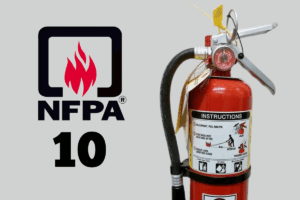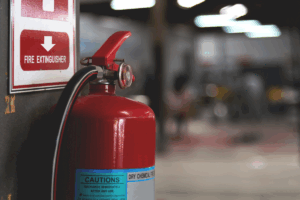When it comes to safety, nobody wants to play a guessing game. Fire protection equipment is one of those areas where the stakes are too high to shrug and hope for the best. But here’s the million-dollar question that keeps popping up in facilities management circles: Do you need a certification to inspect a fire extinguisher… or can anyone do it?
The answer isn’t as black and white as you might think. Some inspections fall squarely in the “leave it to the pros” category, while others are well within the wheelhouse of trained employees. Knowing the difference is crucial, not just for compliance, but for confidence. Let’s break it down.
The Monthly Visual Inspection: Anyone Can Do It
Every workplace has someone who walks the floor daily, checking that lights are on, doors aren’t blocked, and machines are humming happily. Adding a fire extinguisher inspection to that routine is a natural fit.
Here’s why:
OSHA and NFPA guidelines only require that extinguishers be inspected monthly for accessibility, visibility, and pressure readiness.
These checks are visual and straightforward: Is the extinguisher hanging on the wall? Is the pressure gauge in the green? Has it been tampered with? Is the pin in place?
No certifications needed, just a sharp eye, a little common sense, and the discipline to record findings. That means your security officers, safety coordinators, or facility leads can all play a role in keeping extinguishers inspection-ready.
Think of these inspections like brushing your teeth: you don’t need a dentist every day, but you do need consistency.
The Annual Maintenance: Call in Certified Pros
Now, let’s fast-forward to the annual maintenance, the part where a sticker or tag gets updated by someone who knows the ins and outs of fire extinguisher regulations.
This is where certifications matter. NFPA 10 requires that annual inspections be performed by a licensed fire protection professional. These certified inspectors do far more than glance at the gauge:
- They check the mechanical parts for wear.
- They test the discharge nozzle for obstructions.
- They verify the agent inside hasn’t deteriorated.
- They review the inspection history to keep everything in compliance.
Unlike a monthly walkthrough, this process requires specialized training and often a license issued by the state or local authority. It’s not just about ticking a box, it’s about ensuring that if the extinguisher is ever needed, it will work exactly as intended.
- The Monthly Visual Inspection: Anyone Can Do It
- The Annual Maintenance: Call in Certified Pros
- The Five, Six, and Twelve-Year Milestones: Lab Coats Required
- Why the Division of Labor Matters
- Bringing It All Together with Smart Tools
- Final Thoughts
- Other Helpful Articles
- Want to learn more about InspectNTrack?
- Navigation
- Quick Links

The Five, Six, and Twelve-Year Milestones: Lab Coats Required
Fire extinguishers don’t just get old; they also need deep maintenance at scheduled intervals. Here’s where the science kicks in:
- Six-Year Maintenance: Stored-pressure extinguishers must be emptied and undergo a thorough internal examination.
- Twelve-Year Hydrostatic Testing: Extinguishers are pressure-tested with water or another approved medium to ensure the cylinder can still safely contain the extinguishing agent.
Neither of these steps is something you want an untrained employee attempting on a Tuesday afternoon. These are precision tasks that require certification, tools, and testing facilities.
Why the Division of Labor Matters
It may sound bureaucratic to separate who can inspect a fire extinguisher and who can’t, but there’s good reason:
- Accountability: Certified inspectors ensure compliance with NFPA, OSHA, and local fire codes.
- Efficiency: Allowing staff to handle monthly checks frees professionals to focus on the technical, compliance-heavy work.
- Reliability: When everyone knows their role, no inspection slips through the cracks.
In short, letting employees handle what they’re allowed to handle; and bringing in experts when needed, creates a layered defense that maximizes safety without bogging down operations.

Bringing It All Together with Smart Tools
Here’s the kicker: whether it’s a quick visual sweep or a full-blown certified inspection, documentation is the make-or-break element. If it isn’t written down, it didn’t happen, and that’s a problem during audits.
That’s where inspection management platforms like InspectNTrack step in. By digitizing the inspection process, you can:
- Assign monthly checks to staff with simple mobile prompts.
- Schedule certified annual inspections without losing track of dates.
- Store all inspection records in one centralized, audit-ready system.
No more paper tags, no more lost binders, and definitely no more guesswork.
Final Thoughts
So, to recap: anyone can visually inspect a fire extinguisher every month, but only certified professionals can handle annual, five-year, six-year, and twelve-year inspections. The smart move? Empower your employees to own the simple checks, and partner with the pros for the rest. And if you want to make life easier for both groups, lean on technology that ensures nothing slips through the cracks.
Because in the world of fire safety, “good enough” just isn’t good enough.

